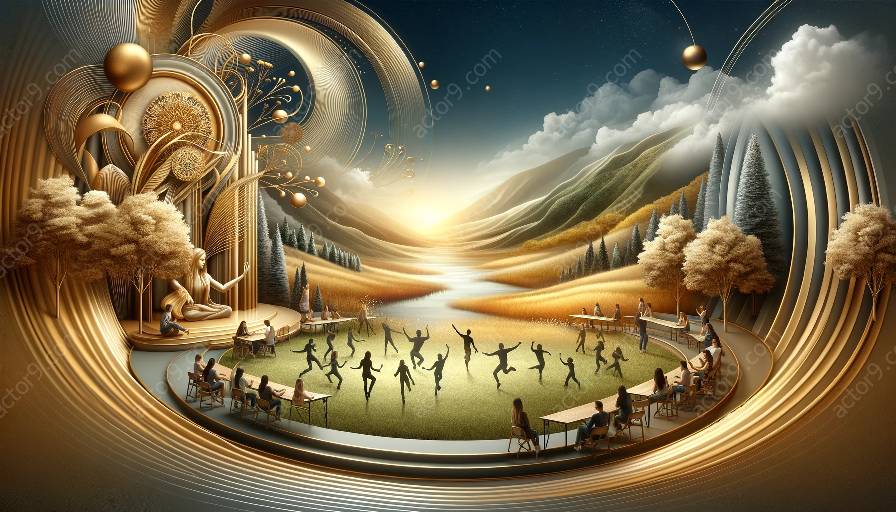Physical theatre serves as a powerful tool for engaging students in exploring cultural and historical contexts in educational settings. By blending movement, storytelling, and emotion, physical theatre facilitates a deeper understanding of cultural and historical narratives, making these subjects come alive in a way that traditional educational methods often cannot. In this topic cluster, we will delve into the ways in which physical theatre enriches the educational experience, fosters empathy, and encourages critical thinking while promoting inclusivity and diversity.
Understanding Cultural and Historical Contexts Through Physical Theatre
When it comes to learning about cultural and historical contexts, physical theatre goes beyond textbooks and lectures by providing a multi-sensory and immersive experience. Through expressive movements, gestures, and facial expressions, physical theatre conveys narratives and emotions, enabling students to connect with historical events and cultural traditions on a deeply personal level. Students are no longer passive recipients of information but active participants in the exploration and interpretation of these contexts.
Immersion in Historical and Cultural Narratives
Physical theatre allows students to physically embody characters and events from various cultural and historical periods, fostering a sense of empathy and understanding. By engaging in role-playing and embodying different perspectives, students gain insight into the complexities of historical and cultural narratives, allowing them to appreciate the diversity of human experiences and perspectives. This approach encourages students to question assumptions and broaden their worldview.
Encouraging Critical Thinking and Creativity
Physical theatre requires students to think critically about the movements, gestures, and symbols they use to convey meaning. This process prompts students to analyze and interpret cultural and historical themes, thereby honing their critical thinking skills. Additionally, physical theatre encourages creativity and imaginative thinking, empowering students to reinterpret historical events and cultural traditions through their own unique artistic expressions.
Promoting Inclusivity and Diversity
Through physical theatre, students have the opportunity to explore stories, traditions, and perspectives from diverse cultures and historical periods. This promotes inclusivity and diversity in educational settings by highlighting the richness of human experiences and encouraging respect for different cultural and historical backgrounds. Physical theatre allows students to embrace and celebrate cultural diversity, fostering a sense of global citizenship and interconnectedness.
Enhancing Interdisciplinary Learning
Physical theatre naturally lends itself to interdisciplinary learning, as it integrates elements of drama, history, cultural studies, and physical education. By combining these disciplines, physical theatre provides a holistic approach to understanding cultural and historical contexts, emphasizing the interconnectedness of knowledge and cultivating a well-rounded educational experience.
Conclusion
Physical theatre offers a dynamic and engaging platform for exploring cultural and historical contexts in educational settings. By immersing students in interactive, multi-sensory experiences, physical theatre facilitates a deeper understanding of cultural and historical narratives, promoting empathy, critical thinking, inclusivity, and interdisciplinary learning. Through the use of physical theatre, educators can create transformative learning experiences that inspire students to appreciate and critically analyze the rich tapestry of human history and cultural heritage.




































